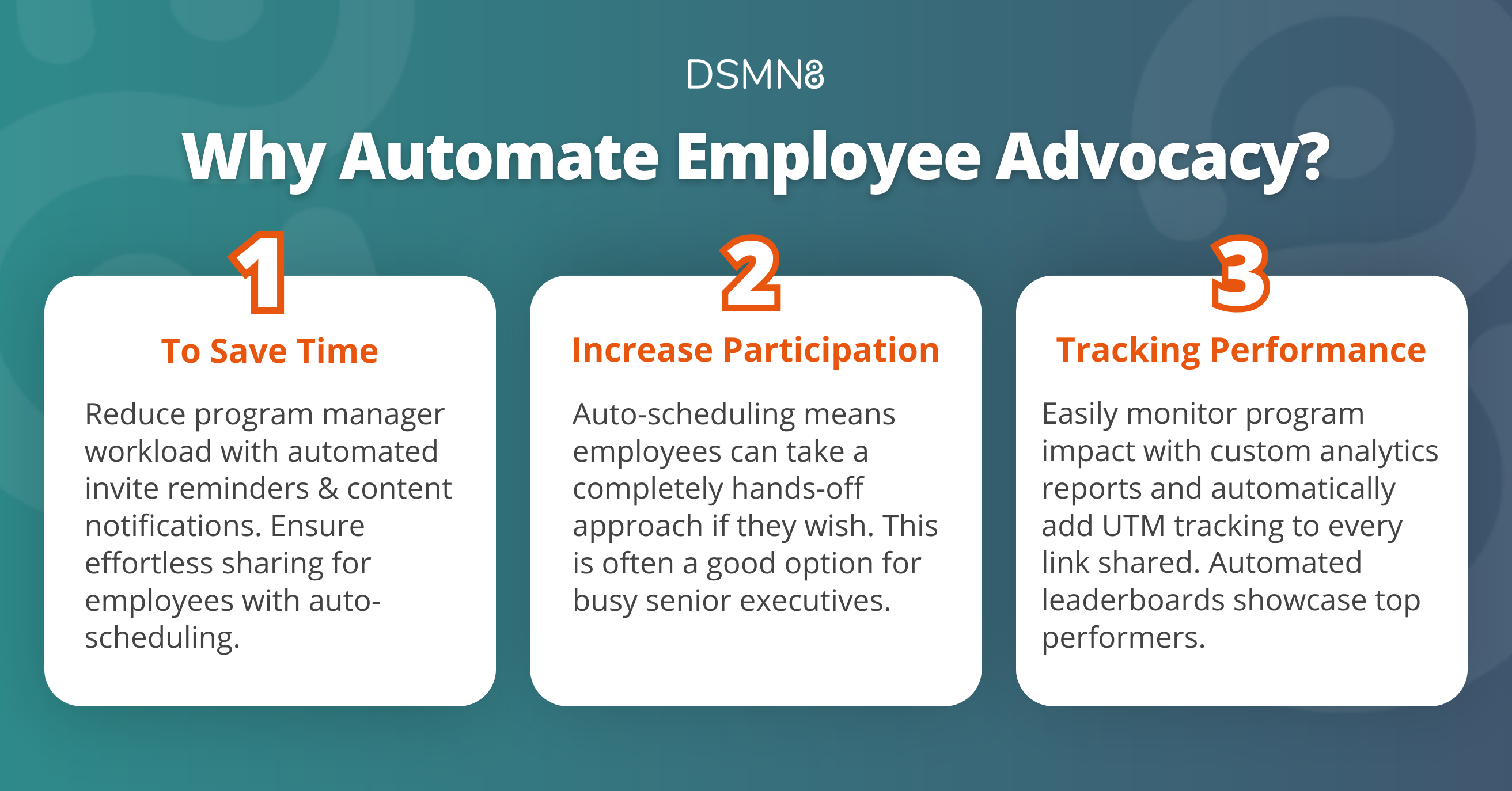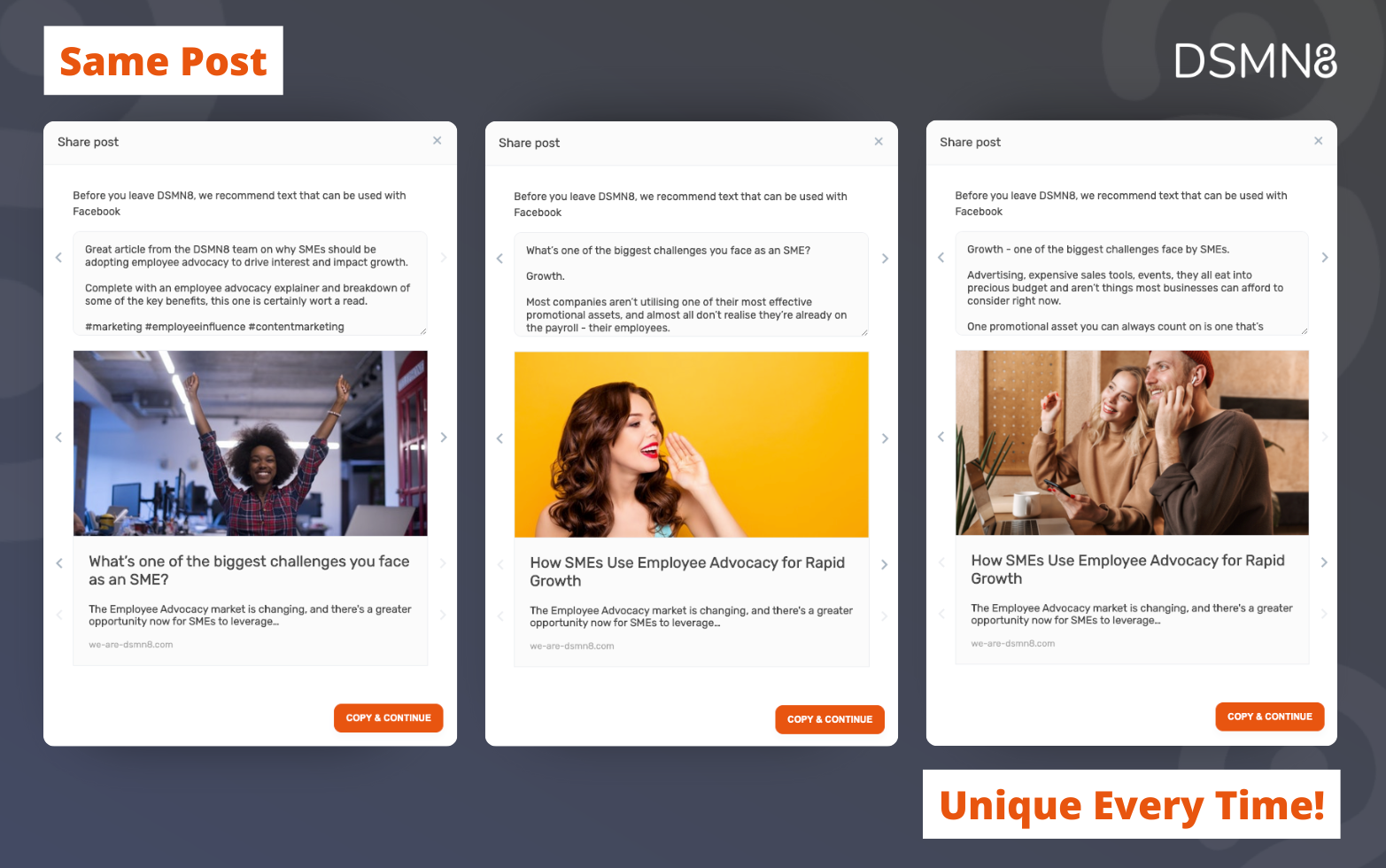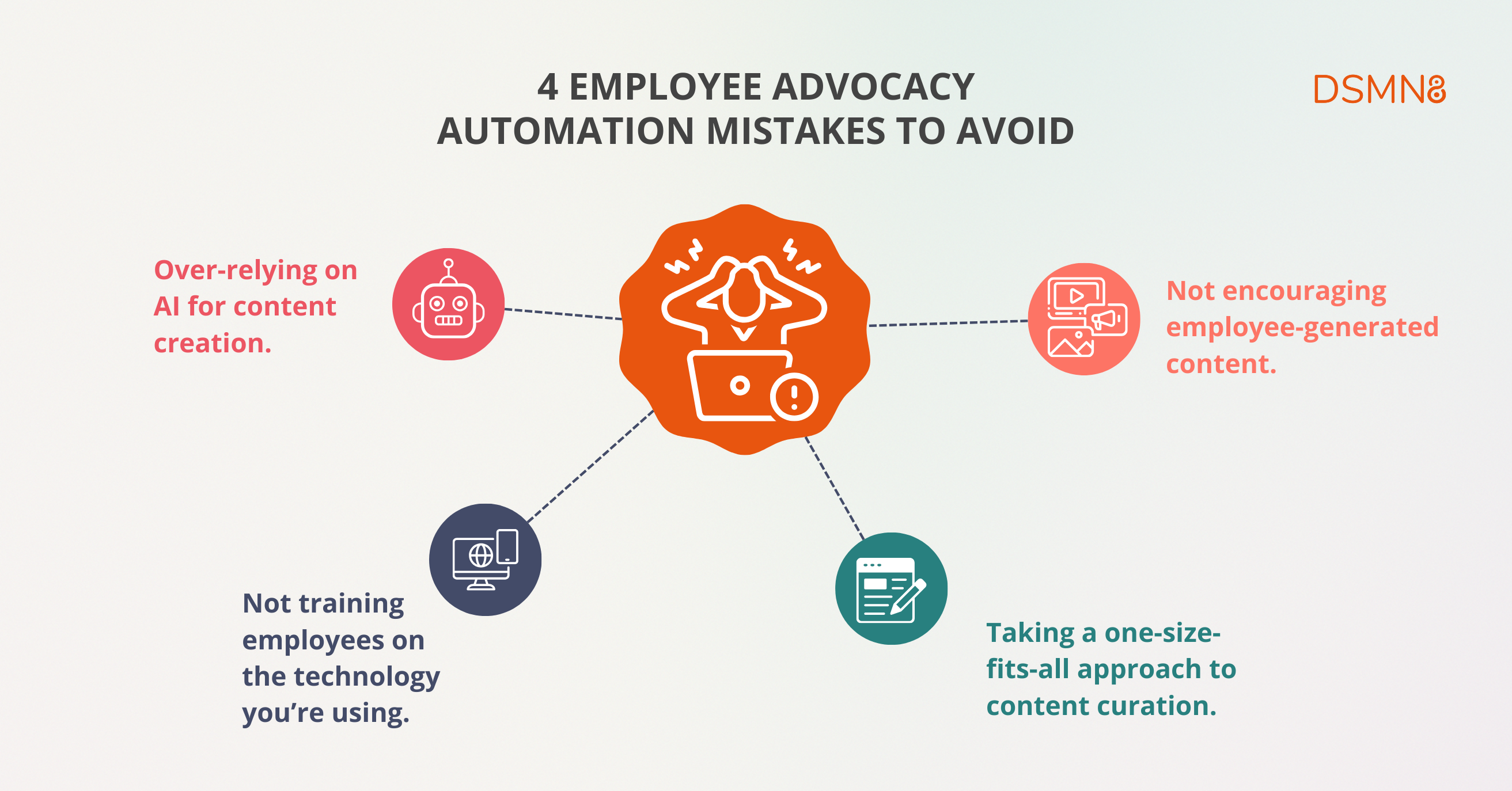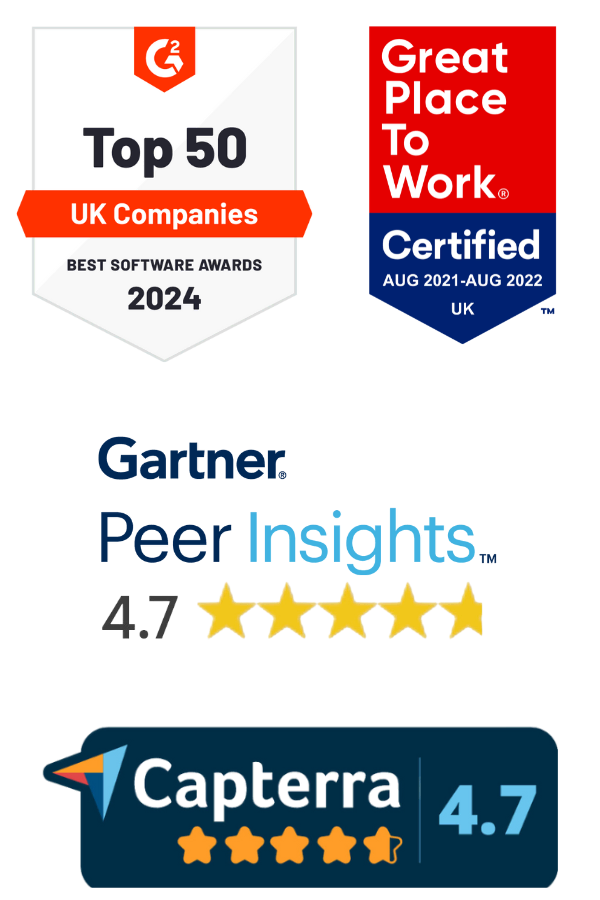
Employee advocacy is one of the most powerful ways to amplify your company’s reach, enhance credibility, and drive engagement on social media. It’s also the most authentic way to build trust, thanks to more humanized brand messaging.
But, managing an advocacy program can be time-consuming, from content creation and curation to scheduling and monitoring the impact 😩
That’s where automation can really help. By leveraging AI-powered tools and automations, employee advocacy program managers can streamline their workflows.
In this article, we’ll explore the key benefits of automating employee advocacy, how the DSMN8 platform can help, best practices for using AI for content creation, and common pitfalls to avoid.
Why Automate Employee Advocacy?
1) It saves time and effort.
One of the biggest challenges in employee advocacy is making it easy and efficient for program managers and advocates. The goal is to minimize the time employee advocacy takes out of everyone’s working day.
Automation helps by:
a. Reducing workload for marketing teams. AI-powered tools can support caption creation for social media posts, saving hours each week. Employee advocacy platform features such as automated reminders via email or internal communications integrations ensure employees don’t miss important content.
b. Making sharing effortless for employees. Platforms with features like DSMN8’s ‘auto-scheduling’ enable employees to take a hands-off approach, knowing that pre-approved content will be shared at optimal times without any effort required.
2. It increases participation.
Employee advocacy, of course, relies on employee participation.
However, many employees, especially senior leadership, simply don’t have the time to make social media a priority. Automation helps to solve this issue by:
a. Encouraging wider company adoption. Some employees may be unwilling to spend time sharing content but are happy to participate if no time is required.
b. Engaging key stakeholders. Executive influencers like your CEO are game-changers in driving program results. Getting them involved boosts your metrics drastically: we found that a CEO could generate the same impact as a company page with 98% fewer followers! It also sets an example for the rest of your organization.
3. It makes tracking performance easy.
Measuring success is essential for any company initiative, and employee advocacy is no exception. Thankfully, many elements of this can be automated.
Analytics is the most important to set up first.
You’ll want to define the most important metrics for your company and create reports to monitor these. Bradley explains below:
This can be done manually by adding UTM tracking codes to the links your employees share, which will then be pulled into Google Analytics for monitoring. Platforms like DSMN8 do this automatically, meaning you don’t have to spend time manually creating these links.
Another area of employee advocacy tracking that can be automated is employee participation and performance. Automatically-generated leaderboards make it easy to recognize those advocates going above and beyond.
How DSMN8 Helps Automate Employee Advocacy
I’ve covered some of the ways employee advocacy platforms can automate processes for you, but before we dive into best practices, let’s briefly summarize.
Here’s how DSMN8 reduces friction for program managers and advocates 👇
Using AI for Employee Advocacy: Best Practices
AI can significantly improve content creation efficiency but should be used strategically. Here are some best practices to keep in mind:
Leverage AI for Content Variation
One of the best use cases for using AI in employee advocacy programs is to create a variety of social media captions for different employees to share.
The last thing you want is everyone sharing the same thing. This is why we recommend curating five captions and five images for every piece of content.
AI is very effective at creating these captions, significantly cutting down curation time. Tools such as DSMN8’s AI Content Assistant can instantly generate multiple post captions based on your original content.
For more customization, advanced AI tools like ChatGPT or Claude enable you to get more specific with your prompting.
Here’s an example AI prompt for employee advocacy:
“Here is a LinkedIn post I have created (insert copy). Please create five alternative versions, each in a different tone of voice. Vary the lengths of the posts, and at least one post should not include emojis.”
By specifying that you’d like various styles, you’ll ensure diversity in your content while keeping the posts aligned with your brand’s messaging. This makes it more likely an employee will find something that resonates with them!
Proofread & Humanize AI-Generated Content
AI can efficiently produce content at scale, but you should bear in mind that it isn’t perfect.
Always check:
✅ Facts and statistics. AI can generate misleading or incorrect information.
✅ Language and tone. Remove robotic phrasing or overused words like “delve” or “utilize”.
✅ Formatting. Ensure that the content not only makes sense but is easily readable/skimmable.
4 Employee Advocacy Automation Mistakes to Avoid
Now we’ve covered the best practices for AI content, let’s take a look at some common employee advocacy automation mistakes to avoid.
As with any technology, striking the right balance is essential ⚖️
Your tools and workflows should increase your productivity and efficiency, not create new problems that need solving for.
❌ Over-relying on AI for content creation
AI-generated posts can feel impersonal. Take care to make the posts sound more authentic, and mix in 100% human-created content, too.
❌ Not training employees on the platform
Even the best employee advocacy tools require guidance! Empower employees to make the most of the technology you’re providing. DSMN8 provides training for your team.
❌ One-size-fits-all content curation
Different teams have different audiences and expertise. Tailor your content to specific departments or employee roles.
❌ Ignoring employee-generated content
Encouraging employees to create their own original content adds authenticity to your program in a way that curated content simply can’t.
Final Thoughts
Managing an employee advocacy program doesn’t have to be extremely time-taxing. AI and automation can streamline content creation, sharing, and performance tracking while boosting employee participation.
Although AI can be a game-changer, human oversight is essential. AI-generated content should always be proofread and fact-checked before you ask employees to share it.
By leveraging automation wisely, you can build a scalable, high-impact employee advocacy program that maximizes engagement while driving results.
Additional Resources
More helpful resources and guides on employee advocacy content strategy:
Ready to get started with the #1 user-rated employee advocacy platform?
Don’t have time to curate employee advocacy content?
Emily Neal
SEO and Content Specialist at DSMN8. Emily has 10 years experience blogging, and is a pro at Pinterest Marketing, reaching 1 million monthly views. She’s all about empowering employees to grow their personal brands and become influencers.







